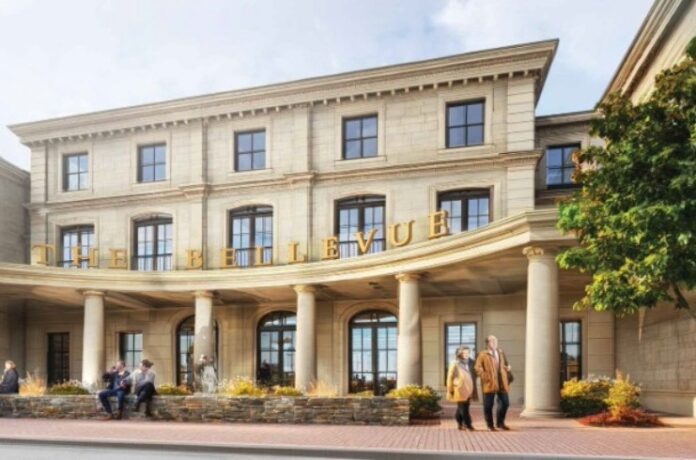Technology is transforming hospitality, but how does innovation blend with genuine service? We ask Christine Lising, Shiji Group’s Director of Solutions Engineering Americas, for her perspective. Exploring the operator-tech divide, unique F&B technology challenges, AI’s real impact, and the future path of hospitality technology evolution.
Takeaways
Empathy in Design: Build tech with operators, understanding workflows and unique F&B needs through empathy.
Cloud & Data Synergy: Cloud platforms enable integration; unified data (PMS, POS, CRM) fuels AI-driven hyper-personalization.
User-Centric Adoption: Ensure user adoption with simple training, intuitive design, and robust vendor support, addressing change management fears.
Automation for Enhancement: Use automation thoughtfully to remove friction, free staff for guest interactions, and enhance genuine hospitality.
Strategic IT & Partnership: Future IT leaders must enable strategy via flexible platforms, integration, data governance, and strong vendor partnerships.
Hospitality & Technology
You describe your role as “bridging the gap between hospitality and technology.” What are the common disconnects between hotel operators and tech solutions, and how do you address them?
One of the biggest disconnects is that operators often view technology as a cost center rather than a value driver. Many solutions are built with a tech-first mindset, which can overlook the day-to-day realities of hotel staff. We bridge that gap by translating operational needs into technical requirements, and vice versa, ensuring all of our products are intuitive, purpose-built, and aligned with how hospitality teams actually work. This means spending time on-property, understanding workflows, and building with empathy.

The biggest disconnect on the Food & Beverage side is that many F&B tech solutions are designed with restaurants in mind, not the complexity of hotel operations. Hotel F&B teams often juggle multiple outlets, in-room dining, banquets, and integrations with PMS, all of which create unique operational needs. We bridge this gap by working directly with operators to ensure our POS systems reflect their workflows, not generic ones. That means things like shared kitchen routing, revenue center flexibility, and real-time integration with guest folios.
The evolution of hospitality technology
After 21 years in hospitality tech, what transformative change in hotel operations have you observed in the last decade, and where do you foresee the next big leap?
Generally speaking for hotel technology, cloud-native platforms have been the most transformative, breaking down silos, enabling real-time data access, and making system integration vastly more feasible. Looking ahead, the next big leap is hyper-personalization powered by AI and unified data. Imagine a guest journey where preferences, past behaviors, and feedback shape their experience in real time, across every touchpoint—from booking to check-out.
In the Food and Beverage space, mobility has been the biggest shift. Handheld POS devices, mobile ordering, and tablet-based menus have allowed teams to provide service to the guest instead of the other way around. The next leap is predictive operations, using data to anticipate demand, suggest staffing levels, or recommend menu adjustments. This will help F&B teams manage costs more precisely while improving guest satisfaction.


Product enablement & adoption challenges
What are hotels’ main barriers to adopting new technology, and how can vendors facilitate a smoother transition?
Change management is the number one barrier. Training, resistance to change, and fear of operational disruption can stall even the best technologies. F&B teams often operate under intense pressure, high turnover, tight margins, and the constant need for speed. A new system can feel like a disruption. Vendors can help by simplifying training (role-based, consumable content), offering in-service support during go-live, and designing interfaces that are intuitive even for casual staff. Ultimately, success comes from designing with the end user, servers, bartenders, and chefs in mind.
Eliminating friction in F&B operations
What are the key inefficiencies in hotel F&B operations, and how can technology help eliminate them?
Manual order taking, poor communication between front-of-house and back-of-house, and a lack of integration between POS, PMS, and inventory systems are some of the most persistent challenges in hotel F&B operations. These issues lead to slower service, order errors, and limited visibility into menu performance or waste. Integrated cloud POS platforms with mobile ordering, real-time kitchen dashboards, and reporting tools can eliminate these pain points by digitizing the entire order journey. This reduces wait times, improves accuracy, and gives operators actionable insights into sales trends, inventory usage, and operational efficiency, without slowing down the floor.
Optimizing efficiency without sacrificing hospitality
Efficiency is crucial for operators, but there’s concern that excessive automation may reduce the human touch. How can you balance automation with an exceptional guest experience?
In hotel F&B operations, the goal isn’t to replace hospitality with technology; it’s to remove the operational noise that gets in the way. When technology is implemented thoughtfully, it enhances the human touch by freeing staff from repetitive, manual tasks so they can focus on what truly matters: the guest experience. For example, automating order routing, payment processing, and inventory tracking reduces the risk of errors, speeds up service, and gives team members more time to engage with guests, make recommendations, and personalize interactions.
Ultimately, it’s about using automation to create space for hospitality, not eliminate it. The technology should stay behind the scenes, giving the guest a seamless experience and the staff the tools and confidence to deliver exceptional service with consistency and heart.
“Ultimately, it’s about using automation to create space for hospitality, not eliminate it. The technology should stay behind the scenes, giving the guest a seamless experience and the staff the tools and confidence to deliver exceptional service with consistency and heart.” – Christine Lising
The role of AI & Data in decision-making
AI and data-driven decision-making are shaping hospitality. Where do you see the industry excelling in data use, and where is it falling short?
Across the entire property, reputation management tools are a strong example of using data well; real-time feedback analysis helps hotels respond quickly and course-correct service issues. However, the industry still struggles to unify guest data across platforms. PMS, POS, CRM, and other systems often exist in silos. The next step is to connect these data points into a single guest profile, which we do, enabling proactive, predictive service delivery.
For F&B specifically, hotels using POS analytics to guide menu engineering and staffing decisions are ahead of the curve. They can see the profitable items, how long they take to prepare, and when peak times occur. But many still struggle with fragmented systems, inventory data in one place, and guest preferences in another. The real power will come when this data is unified, allowing F&B teams to forecast demand and tailor experiences with precision.
Strategic product launches & future trends
Your role involves strategic product launches. What innovations do you think will shape the future of hospitality technology solutions?
Modular, API-first platforms will empower hoteliers to create customized tech stacks, focusing on AI-driven personalization, voice-assisted interfaces, and advanced analytics for real-time decision-making. The future emphasizes agility, sustainability, and seamless integration.
In Food & Beverage, expect smart kitchen integrations, AI analytics, and voice-enabled ordering, alongside essential sustainability tools. The goal is to create smart, connected kitchens and tech that aligns with modern dining behaviors.
Additionally, server mobility is key, allowing staff to meet guests anywhere and utilize mobile POS systems for flexible order taking and payment processing. This enhances guest experiences by reducing wait times and enabling personalized service, which can boost revenue through quicker table turns and upselling opportunities. The next wave of innovation will further integrate mobility with guest profiles and location data for responsive F&B services throughout the hotel.
Lessons from managing premier regional accounts
What’s the most valuable lesson you’ve learned about technology’s impact on hotel operations while working with high-profile clients?
The most valuable lesson is that even the best technology is only as powerful as its ability to integrate into a unique operational flow. When tech empowers staff, making their jobs easier, not harder, it becomes an asset. But when it adds complexity, requires heavy workarounds, or doesn’t account for the realities of service delivery, it becomes a burden. Successful implementations happen when we co-create solutions with the operator, not for them, listening first, adapting second, and supporting through go-live and beyond.
“Innovation is only successful when it’s grounded in operational reality… We involve operators early. That means testing in real hotel environments, gathering feedback, and iterating quickly.” – Christine Lising
Bridging the gap between vendor innovation & hotel operations
Technology providers create solutions based on trends, but hotel operators face constraints that hinder adoption. How do you balance innovation with practical daily hotel operations?
We involve operators early. That means testing in real hotel environments, gathering feedback, and iterating quickly. Innovation is only successful when it’s grounded in operational reality. For example, in F&B, a great new mobile ordering tool is useless if it doesn’t integrate with operational workflows or can’t load balance, handle multiple revenue centers, etc. So, we work cross-functionally to ensure adoption, usability, and scalability, and understand service impact.
The future of hotel IT management
In an evolving hospitality landscape, what should the IT Manager of the future prioritize to stay ahead in tech?
The IT Manager of the future needs to shift from being a system maintainer to a strategic enabler. That means prioritizing platforms that are scalable, API-driven, and cloud-based, so they can adapt as the hotel’s needs evolve. IT leaders will need to focus on integration strategy, data governance, cybersecurity, and vendor partnerships that deliver long-term value. More importantly, they’ll need to speak both “tech” and “operations”, ensuring technology decisions align with service outcomes, not just infrastructure.
Shaping hospitality technology
What lasting impact do you hope to make in hospitality tech, and how do you see hotel technology evolving?
My passion is the hospitality industry because it’s where we make our memories with the most important people in our lives, it’s how we experience the world, celebrate milestones, and connect with each other. That’s why I’m driven to ensure technology enhances those moments, not detracts from them. I want to champion solutions that are built around people, intuitive tools that empower hotel teams to deliver meaningful, memorable service. If I can help operators feel confident adopting new systems, reduce friction in their daily work, and create technology that supports, not replaces, the heart of hospitality, that’s the legacy I want to leave. Looking forward, I see hotel tech becoming even more personalized, mobile, and interconnected, serving not just guests, but every team member who shapes the guest experience.
Technology supporting the human element
Christine envisions technology as a supportive bridge between operational needs and innovative solutions. Advancements in everything from cloud platforms to AI-driven personalization hold great potential, but success relies on user adoption and practicality. Vendors must collaborate with operators, designing tools that empathize with staff workflows. Automation should ease burdens, allowing teams to focus on genuine hospitality. While data unification can provide deeper insights, it requires careful management. Ultimately, technology enhances efficiency and experience, always serving the mission of creating memorable moments and connections.









